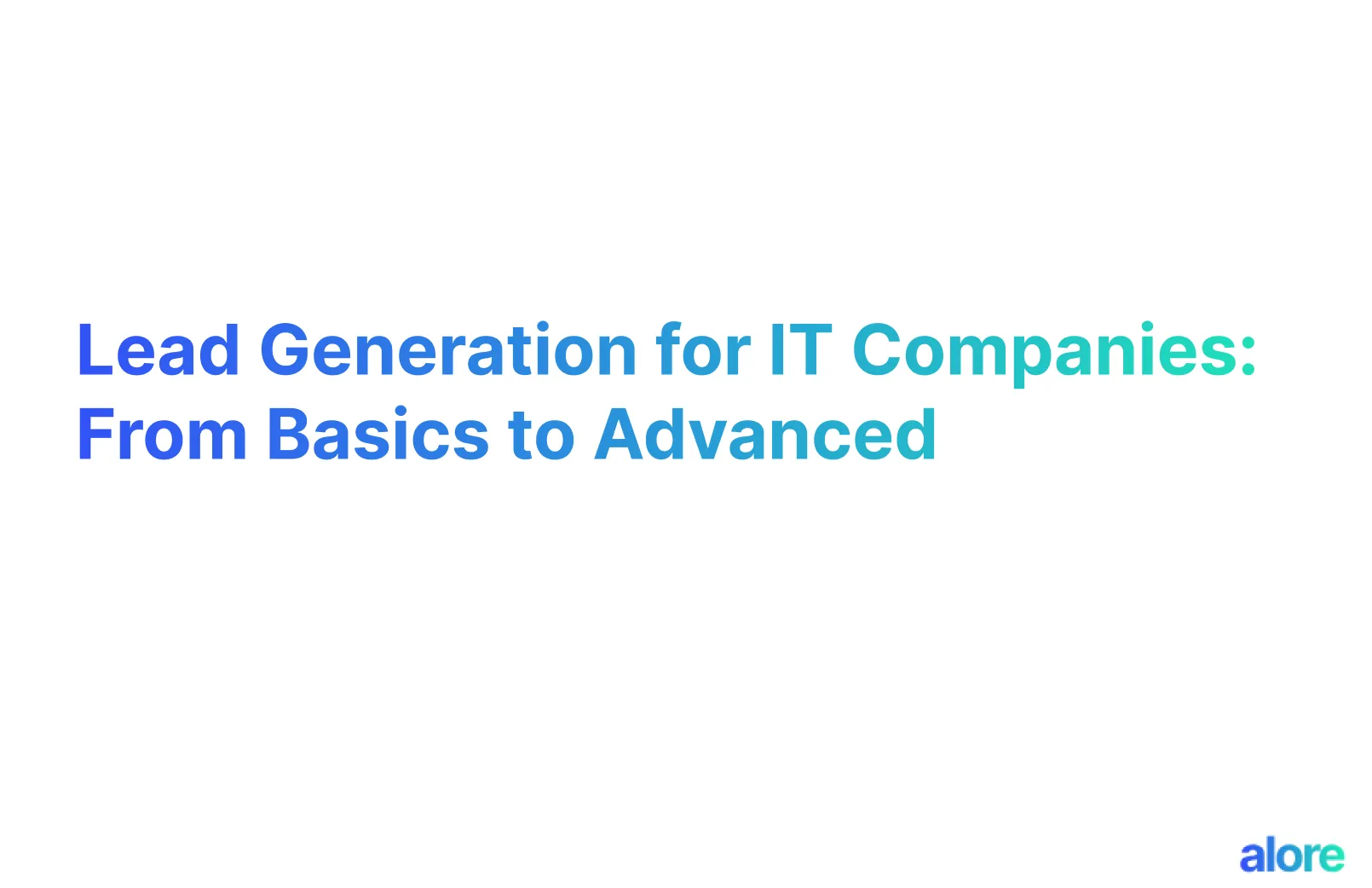Introduction to Performance Marketing
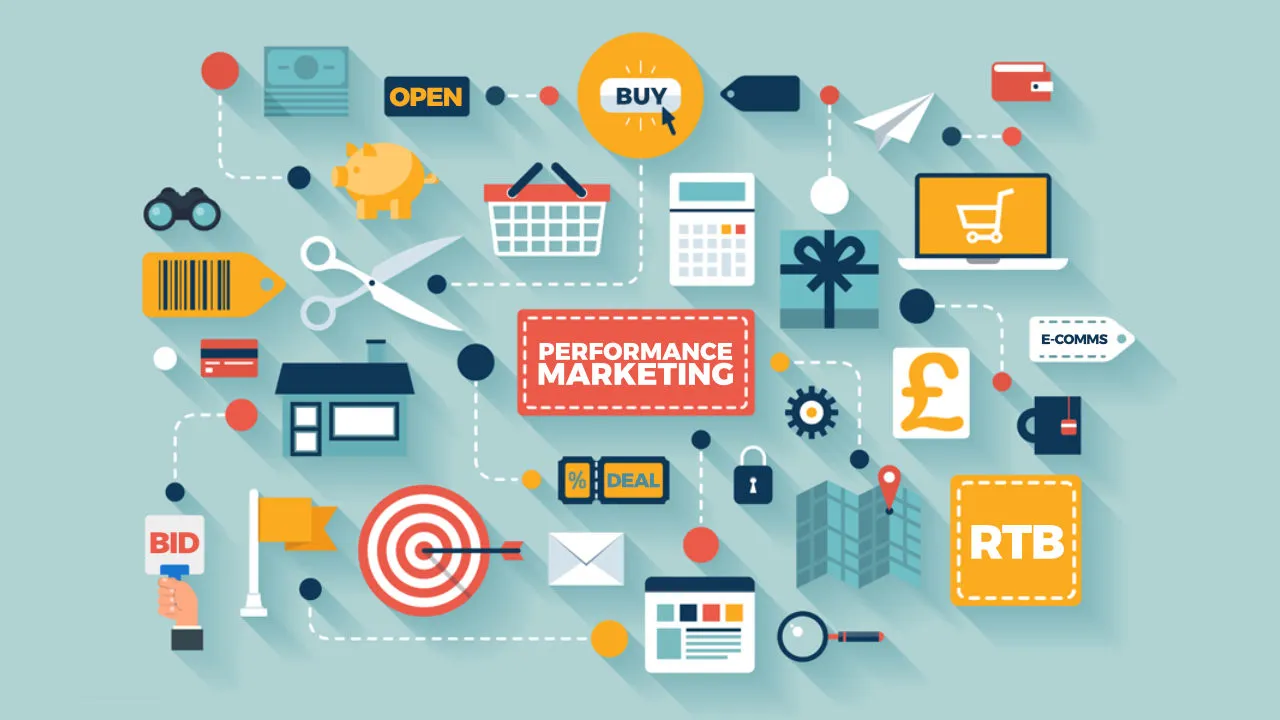
Performance Marketing is an innovative advertising strategy that has improved the way companies approach marketing and advertising. Unlike traditional marketing methods, where expenses are paid upfront and the return on investment (ROI) is not directly measurable, performance marketing allows businesses to pay only for specific actions or results.
This approach ensures that marketing efforts are not just seen as costs but as investments with measurable outcomes.
What is Performance Marketing?
Performance marketing is a way of advertising where businesses only pay when there are actual results, like when someone clicks on their ad, buys something, or signs up for more information.
It's like saying, "I'll pay you if your ad really works."
This model is highly attractive because it shifts the focus from potential to actual results, ensuring that every dollar spent on marketing efforts contributes directly to the company's goals.
Types of Performance Marketing Channels
There are several key types of performance marketing, each with its unique characteristics and benefits:
Affiliate Marketing
This involves partnering with affiliates or publishers who promote your products or services.
Companies pay affiliate partners a commission for directing traffic or sales their way through affiliate links. The payment is based on the completion of specific actions, like sales or leads generated through the affiliate's marketing efforts.
Search Engine Marketing (SEM)
SEM focuses on promoting websites by increasing their visibility in search engine results pages (SERPs) through paid advertising.
This includes pay-per-click (PPC) advertising, where advertisers pay for each click on their ads.
With 65% of small-to-midsized businesses investing in PPC campaigns, SEM stands as a testament to its efficacy in driving targeted traffic.
Social Media Marketing
This type of performance marketing leverages social media platforms to reach target audiences.
Advertisers can pay for various outcomes, such as clicks, impressions, or conversions, resulting from ads displayed on these platforms.
With over 3.8 billion social media users worldwide, the potential reach and engagement are unparalleled.
Native Advertising
Native ads are designed to blend in with the content that surrounds them, providing a less intrusive advertising experience. Advertisers pay based on engagement with these ads, such as clicks or views.
Users view native ads 53% more than traditional ads, underlining their effectiveness in capturing attention.
Influencer Marketing
Paying influencers to promote products or services to their followers. The compensation often depends on the engagement or sales generated from their endorsements.
89% of marketers find ROI from influencer marketing comparable to or better than other marketing channels
Benefits of Performance Marketing
Cost-Effective: You only pay for results, such as sales or leads, which means your money is spent on actions that directly benefit your business.
Measurable: It's easy to track and measure performance with detailed analytics, so you know exactly how well your marketing efforts are doing.
Targeted: You can reach a specific audience more effectively, ensuring your ads are seen by people most likely to be interested in your product or service.
Flexible: Performance marketing allows for quick adjustments based on what the data tells you, so you can optimize your campaigns in real time for better results.
High ROI: Since you’re only paying for actual outcomes, performance marketing can lead to a higher return on investment compared to traditional marketing methods.
Drawback of Performance Marketing
Dependence on Technology: It relies heavily on digital platforms and tracking technologies, which can sometimes fail or be inaccurate.
Risk of Poor Quality: Paying only for results might encourage some marketers to use aggressive or low-quality tactics that could harm your brand's reputation.
Complexity: Setting up, tracking, and optimizing performance marketing campaigns can be complicated and time-consuming, requiring expertise.
Limited Branding: Since the focus is on immediate results, there might be less emphasis on building long-term brand awareness and loyalty.
Competition: The performance marketing space is highly competitive, and standing out can be challenging, often requiring higher investments in creativity and strategy.
Performance Marketing vs Digital Marketing: Key Differences

How Does Performance Marketing Work
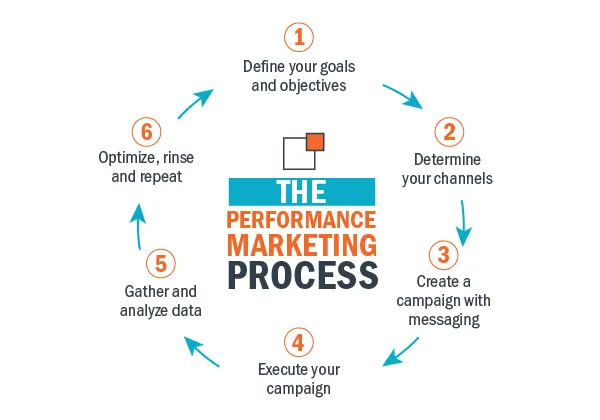
Performance marketing is a way of doing online advertising where businesses only pay when there are actual results, like when someone clicks on their ad, signs up for something or buys a product.
It's like saying, "I'll only pay if this ad really works." Here's how it usually goes down, step by step, in simple terms:
1. Setting Goals
First, a business decides what it wants from its marketing campaign. This could be more website visitors, more people signing up for newsletters, or more sales of a product.
2. Choosing Where to Advertise
Next, the business picks where to put its ads. This could be on social media, on websites through banners, or in search results (like when you Google something).
3. Creating Ads
Then, the business creates ads. These could be text ads, picture ads, or even videos. The aim is to make something that will catch people's attention and make them want to click, sign up, or buy.
4. Paying for Results
Instead of paying just to show the ad, the business pays based on how the ad performs. If the goal is to get clicks, the business pays each time someone clicks on the ad. If the goal is sales, the business pays each time someone buys something because of the ad.
5. Tracking Performance
The business uses special tools to see how well its ads are doing. These tools can tell how many people saw the ad, how many clicked on it, and how many took the action the business wanted (like buying something).
6. Making Improvements
Based on what the business learns from tracking, it can change its ads to make them work better. Maybe it changes the picture or the words in the ad, or maybe it decides to show the ad to different people.
How to Measure Your Performance Marketing Campaign

Measuring performance marketing involves tracking specific metrics that directly relate to your campaign goals.
Here, we've outlined several widely utilized metrics and KPIs to enhance your comprehension of performance marketing pricing.
Pay Per Sale (PPS) or Cost Per Acquisition (CPA)
This model focuses on the cost of acquiring a customer who completes a purchase. It's a crucial metric for campaigns aimed at driving sales.
- Calculating CPA: Divide the total cost of the campaign by the number of sales it generated. For example, if you spend $1,000 on a campaign that results in 20 sales, your CPA is $50 per sale.
- CPA=TotalCampaignCost/NumberofConversions(Sales)CPA=TotalCampaignCost/NumberofConversions(Sales)
Measuring Effectiveness:
- ROI Analysis: Compare the CPA against the average order value (AOV) and customer lifetime value (CLV) to assess the profitability of your campaign. A positive ROI indicates a successful campaign.
- Conversion Rate: Analyze the conversion rate from click to purchase to identify bottlenecks in the sales funnel and opportunities for optimization.
- Channel Performance: Break down CPA by marketing channel to identify which are most cost-effective at driving sales.
Pay Per Lead (PPL)
PPL campaigns are designed to generate leads, such as sign-ups, registrations, or any form of expressed interest, without necessarily resulting in an immediate sale.
- Calculating PPL: Similar to CPA, divide the total cost of the campaign by the number of leads generated. If a campaign costing $500 generates 50 leads, the PPL is $10 per lead.
- PPL=TotalCampaignCost/NumberofLeadsPPL=TotalCampaignCost/NumberofLeads
Measuring Effectiveness:
- Lead Quality: Not all leads are equal. Assess the quality of leads by tracking how many convert into paying customers. High-quality leads have a higher conversion rate, indicating more effective targeting.
- Lead Source Efficiency: Evaluate which channels or strategies yield the highest number of quality leads at the lowest cost. This helps allocate budget more effectively.
- Conversion Path Analysis: Use analytics to understand the paths leads take before conversion. This insight can help refine the campaign to focus on the most effective touchpoints.
Pay Per Click (PPC)
PPC is a model where advertisers pay each time a user clicks on one of their online ads. It’s widely used in search engine advertising and social media campaigns.
- Calculating PPC Costs: The cost is directly tied to the number of clicks on the ad. If you spend $200 on a campaign and receive 100 clicks, the cost per click (CPC) is $2.
- CPC=TotalCampaignCost/NumberofClicksCPC=TotalCampaignCost/NumberofClicks
Measuring Effectiveness:
- Click-Through Rate (CTR): This metric indicates the effectiveness of your ads in capturing attention. A higher CTR suggests that your ad is relevant and engaging to your target audience.
- CTR=(NumberofClicks/NumberofImpressions)x100CTR=(NumberofClicks/NumberofImpressions)x100
- Quality Score: For platforms like Google Ads, the Quality Score reflects the relevance and quality of your ads and selected keywords. A higher score can lead to lower costs and better ad positioning.
- Conversion Rate: Ultimately, the effectiveness of PPC isn’t just in getting clicks but converting those clicks into actions, such as sales or leads.
Pay Per X (PPX)
PPX stands for Pay Per [Action], a flexible model that allows advertisers to define a specific action (X) as the basis for payment. This could be an engagement, download, installation, or view.
- Defining and Calculating PPX: The specific action (X) needs to be clearly defined, and costs are incurred each time this action is completed. If the action is a download and you pay $500 for 250 downloads, the cost per action (CPA) is $2.
- CPA=TotalCampaignCost/NumberofActionsCompletedCPA=TotalCampaignCost/NumberofActionsCompleted
Measuring Effectiveness:
- Action Completion Rate: Measures how effectively the campaign prompts the desired action. A high rate indicates strong ad-to-action alignment.
- Cost Efficiency: Assessing the CPA against the value each action brings to your business helps determine the campaign's cost efficiency.
- Audience Relevance: Analyzing which segments are completing the desired action can inform audience targeting and ad personalization strategies.
Lifetime Value (LTV)
LTV is the total revenue a business can expect from a single customer throughout their relationship with the company. It’s a crucial metric for assessing the long-term value of marketing efforts.
- Calculating LTV: Combine the average purchase value, purchase frequency, and customer lifespan to determine LTV. For example, if customers spend an average of $50 per purchase, make 10 purchases a year, and remain customers for 5 years, the LTV is $2,500.
- LTV=AveragePurchaseValuexPurchaseFrequencyxCustomerLifespanLTV=AveragePurchaseValuexPurchaseFrequencyxCustomerLifespan
Measuring Effectiveness:
- ROI Over Time: LTV allows businesses to measure the ROI of marketing campaigns over the long term, beyond initial acquisition costs.
- Segmentation: Identifying customer segments with the highest LTV can help tailor marketing strategies to attract and retain these valuable customers.
- Cost of Acquisition vs. LTV: Comparing the cost of acquiring customers (CPA) to their LTV provides insight into the profitability of marketing efforts. A healthy ratio ensures sustainable growth.
What Doesn't Work in Performance Marketing
In performance marketing, certain strategies may not deliver the expected results, affecting the overall effectiveness of campaigns. Understanding these pitfalls is crucial for marketers aiming to optimize their efforts and achieve better outcomes.
Ineffective Targeting
- Campaigns that target too broadly or miss the mark with their audience can lead to low engagement rates. For instance, a study by WordStream found that the average click-through rate (CTR) in AdWords across all industries is about 1.91% for search and 0.35% for display.
- These numbers highlight the importance of precise targeting, as even within the realm of performance marketing, there's a significant variance in effectiveness based on how well the audience is defined.
- Proper targeting ensures that your marketing message reaches those most likely to be interested in your products or services, maximizing your advertising spend's efficiency.
Neglecting the Mobile Experience
- Lack of Mobile Optimization: With over 50% of global website traffic coming from mobile devices (Statista), ignoring mobile users can significantly impact campaign performance.
- Mobile-optimized campaigns see higher engagement and conversion rates because they cater to the user's context and device preferences.
Underestimating Content Quality
- Poor Ad Creative and Content: Ads or content that fail to engage or resonate with the target audience can lead to ad fatigue and low conversion rates.
- High-quality content can drive a 5-10% conversion rate, whereas poorly crafted messages significantly drop below this range, underscoring the need for compelling and relevant ad creatives.
Inadequate Landing Page Experience
- Complicated User Interface: A landing page that's not user-friendly can have bounce rates as high as 90%, compared to the average of 20-40%.
- The landing page is often the first detailed interaction a potential customer has with your brand; making it count can drastically improve conversion rates.
Lack of Continuous Testing
- Failure to Test and Optimize: Without A/B testing and optimization, it's challenging to understand what elements of your campaign are working.
- Regular testing can improve conversion rates by up to 300%, highlighting the importance of continual refinement.
Overlooking the Customer Journey
- Not Addressing Different Stages: Customers at different stages of their journey (awareness, consideration, decision) require tailored messaging.
- Mapping out the customer journey and creating specific content for each stage can lead to higher engagement and conversions.
Poor Data Utilization
- Not Acting on Data Insights: Data is a goldmine of insights. Not leveraging these insights can lead to missed opportunities for optimization.
- Businesses that adopt data-driven marketing are six times more likely to be profitable year-over-year, per a report by Forbes.
Short-term Focus
- Overemphasis on Immediate Conversions: Focusing solely on short-term gains can overlook the importance of building lasting customer relationships.
- Customers acquired through performance marketing have a potential lifetime value that far exceeds their initial purchase if nurtured correctly.
Proven Performance Marketing Strategy to Use
Implementing proven performance marketing strategies is essential for businesses looking to optimize their digital marketing strategy efforts and achieve measurable results.
Here are some strategies, including real-world examples, that demonstrate how these approaches can significantly benefit businesses:
Affiliate Marketing
- Partnering with affiliates to promote products or services in exchange for a commission on sales or leads.
- Advertisers pay marketing companies or individual affiliates based on the performance of their referrals. This performance can be tracked through unique affiliate links, ensuring that each sale or lead can be accurately attributed to the correct affiliate.
Real-World Example
Amazon’s affiliate program is a prime example of affiliate marketing done right. By allowing website owners and bloggers to earn a commission on products they recommend, Amazon has significantly expanded its reach and sales without upfront advertising costs. This approach has not only contributed to Amazon's online dominance but also allowed countless content creators to monetize their traffic.
Search Engine Marketing (SEM)
- Utilizing paid advertisements that appear on search engine results pages (SERPs) to increase website visibility instantly.
- Advertisers bid on keywords that users might enter when looking for certain products or services, allowing for immediate visibility on search engines like Google.
Real-World Example
A classic example is how Zappos leverages SEM to drive sales. By bidding on a wide range of keywords related to footwear and fashion, Zappos places its ads prominently in Google’s search results, directly reaching customers who are ready to buy. This strategy significantly boosts their online sales and contributes to their status as a leading online shoe and clothing retailer.
Influencer Marketing
- Collaborating with influencers to promote products or services to their followers on social media or other channels.
- Brands partner with influencers whose audience aligns with their target market. These influencers then create content that naturally incorporates the brand or product, introducing it to a new, engaged audience.
Real-World Example
Daniel Wellington, a watch brand, used influencer marketing to skyrocket their brand marketing. By sending free watches to influencers with a wide range of follower counts and asking them to share photos of the watches with a unique discount code, Daniel Wellington was able to tap into numerous niche markets simultaneously. This strategy helped them grow into a globally recognized brand, demonstrating the power of leveraging social proof through influencer partnerships.
Programmatic Advertising
- Using automated technology to purchase digital advertising, as opposed to traditional, manual methods. This allows for more efficient and precise ad buying, targeting specific audiences in real time.
- Advertisers use software to bid on ad space based on specific criteria such as demographics, behavior, and more.
Real-World Example
A travel company can use programmatic advertising to show ads for Caribbean vacations to users who have recently searched for winter escapes. By targeting these high-intent users across various platforms, the company increases its ad relevancy, leading to higher conversion rates and a better return on investment.
5 Top Performance Marketing Software
Choosing the right performance marketing software is crucial for effectively managing and optimizing campaigns.
Here are five top-performance marketing software platforms, each offering unique features to help marketers achieve their goals:
Partnership Tools
1. Impact Partnership Cloud
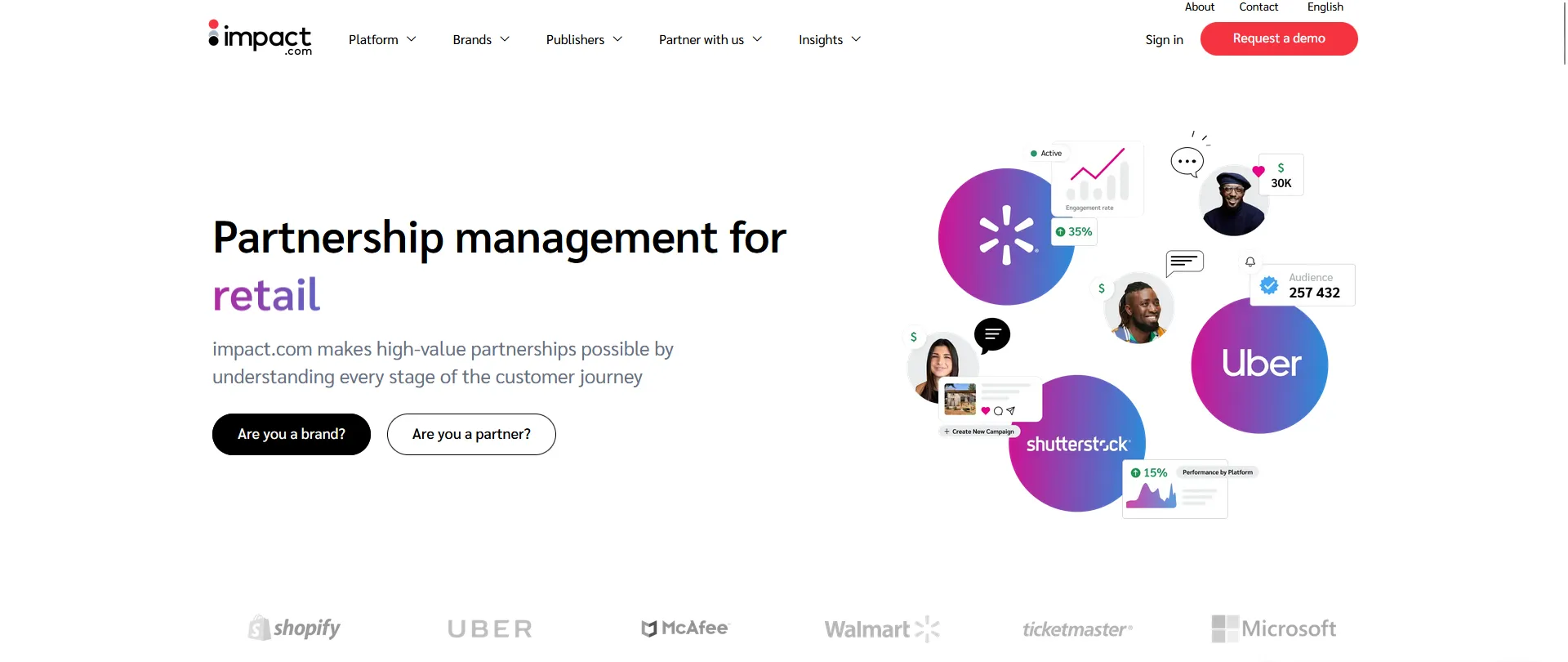
- Streamlines affiliate and influencer partnerships with tools for recruitment, engagement, tracking, and payment. Its automation capabilities and robust analytics make managing partnerships at scale easier.
Price: Starts at $500.00 per month
2. PartnerStack
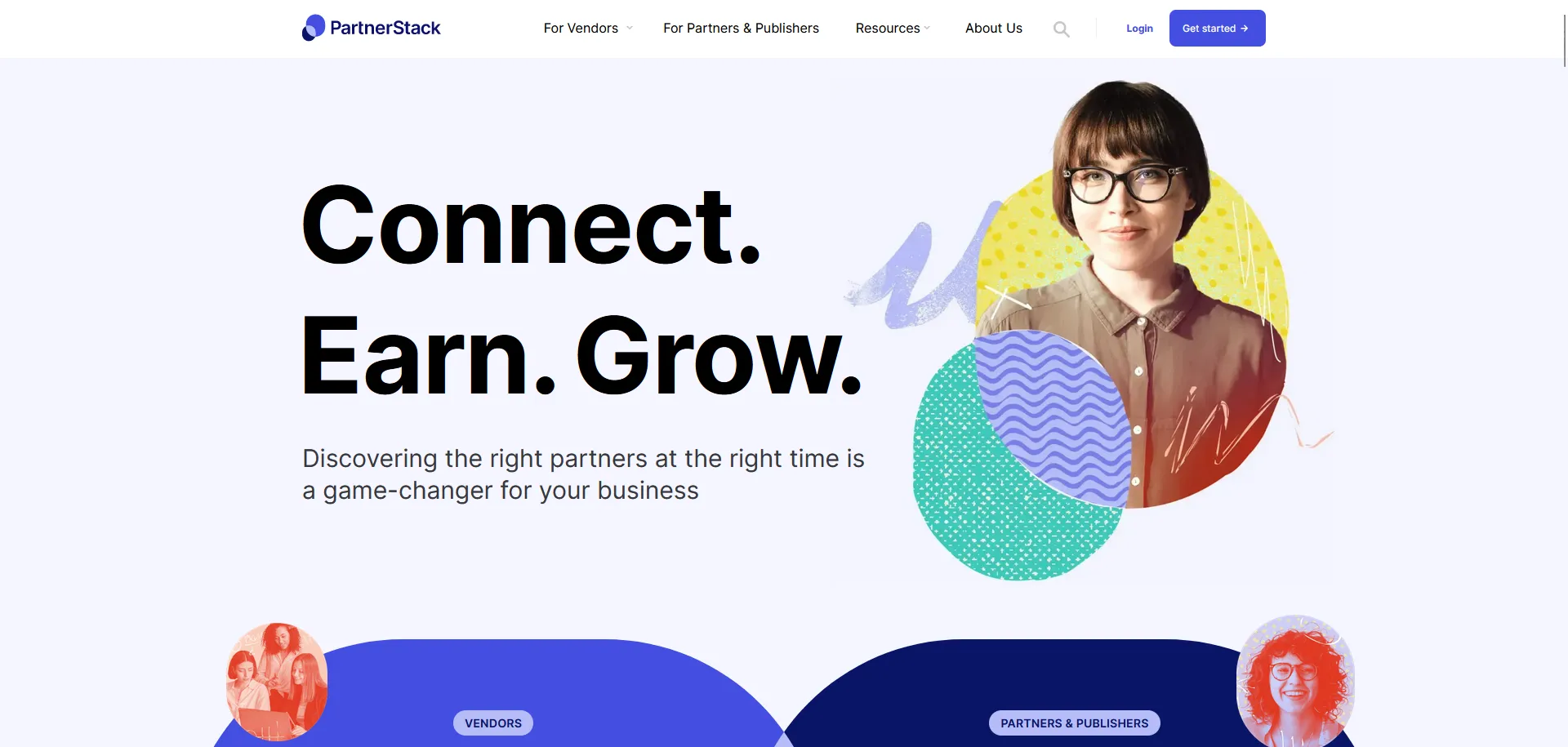
- Specializes in SaaS partnerships, offering a platform that supports referral, reseller, and affiliate programs. It helps automate onboarding, tracking, and payouts, making it easier for companies to scale their partner programs.
Tracking Tools
3. Voluum

- A cloud-based ad tracking software that provides real-time analytics for your online marketing campaigns, AI-powered optimization, and automation features. It supports tracking of all advertising campaigns, including web, mobile, and affiliate.
Price: Start from $199 per month to $349 per month
4. HasOffers by TUNE

- Offers a flexible and scalable solution for managing, tracking, and optimizing affiliate marketing and performance advertising programs. It provides detailed reporting and fraud detection capabilities.
Price: Start from $599 per month to $1500 per month
Analytics and Data Management Tools
5. Google Analytics

- The go-to tool for web analytics, offering in-depth insights into website traffic, user behavior, and conversion tracking. It integrates seamlessly with other Google services like Ads and Search Console for comprehensive digital marketing campaigns.
6. Adobe Analytics

- Provides advanced analytics for understanding customer journeys across multiple channels and devices. It offers real-time data, predictive analytics, and detailed segmentation capabilities.
Conversion Rate Optimization (CRO) Tools
7. Optimizely
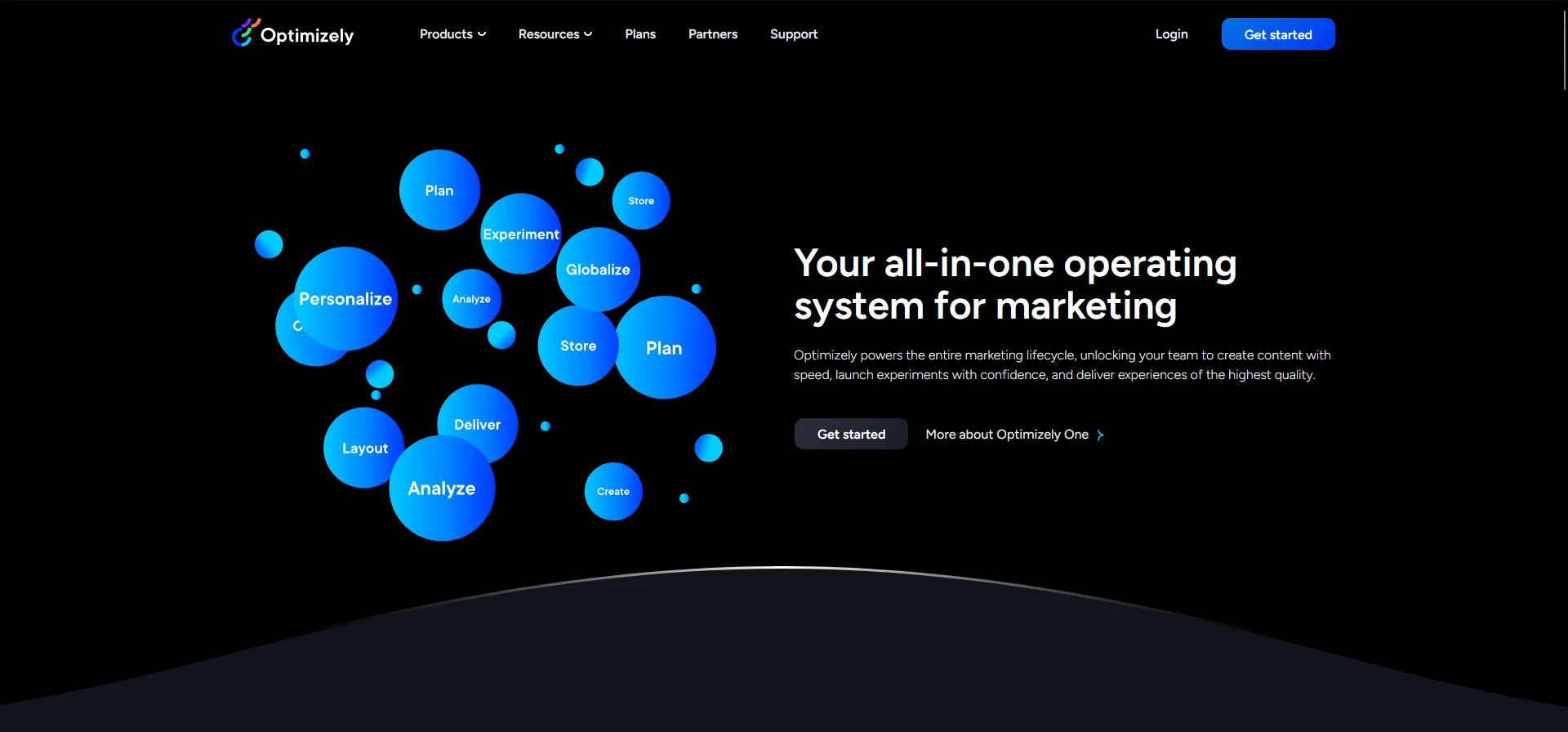
- A leading platform for experimentation and personalization across websites, mobile apps, and connected devices. It allows marketers to A/B test different versions of their site to improve user experience and conversion rates.
8. Unbounce
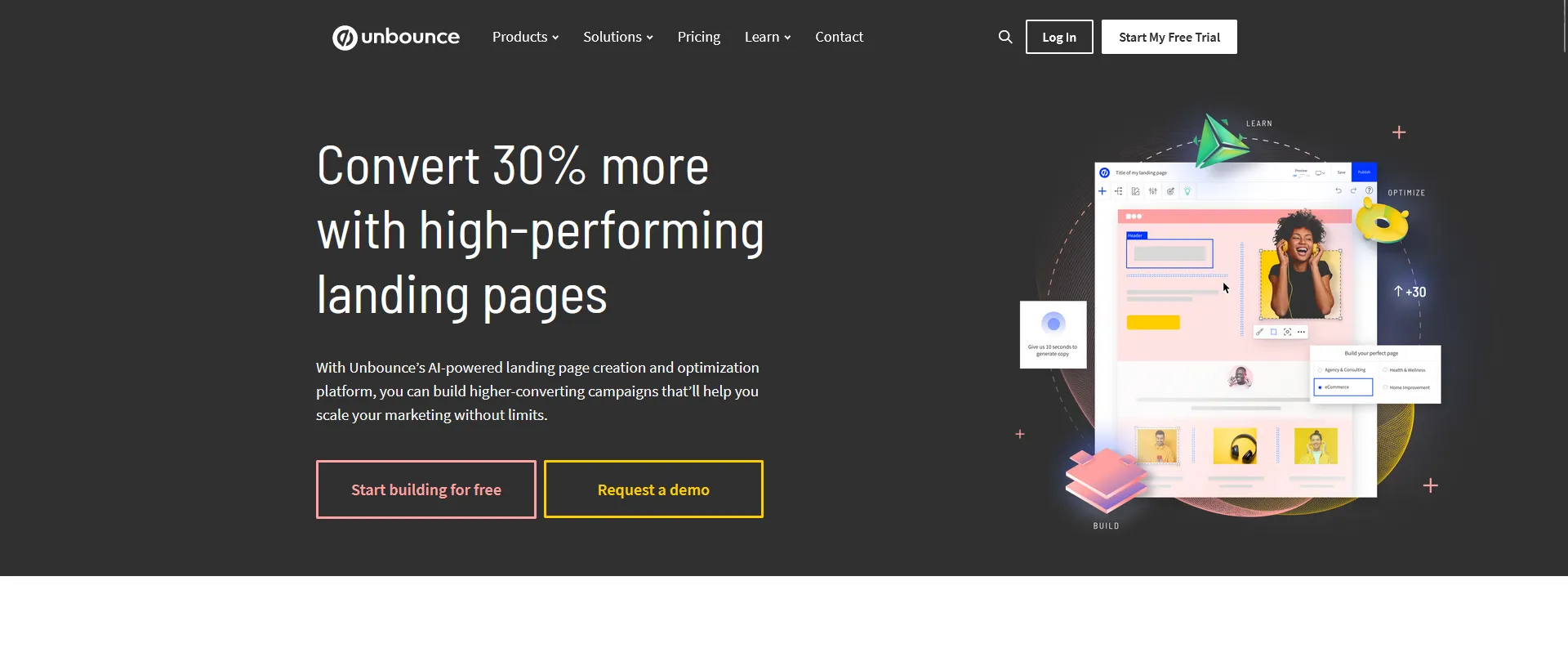
- Specializes in landing page optimization and A/B testing. With its drag-and-drop builder, marketers can easily create and test different landing page versions to maximize conversions.







